By Tom Morr, automedia.com
Difficulty: Difficult
Estimated time: 240 minutes
Most people think that wheel alignment is best left to the professionals. This is true in many respects, but some alignment specs are easy to check yourself, and toe is one aspect of alignment that can be checked at home. This can come in handy after replacing steering or suspension components so that the vehicle won't be wildly out of adjustment for the trip to the alignment shop, or at the very least provide a better understanding of the alignment process.
Factors affecting wheel alignment
In theory, all four wheels should be perpendicular to the ground and parallel to each other. When the vehicle starts pulling to one side – or after a sharp impact with a curb – most drivers suspect that the wheels might be out of alignment. Irregular tire wear, vibration and odd handling characteristics are other clues.
The three factors that affect alignment are toe-in, camber and caster. The first two can easily be checked at home.
Toe-in
Car front tires are slightly pigeon-toed to intentionally place a very slight load on the wheel bearings. Typical toe-in specs vary from one-thirty-second to one-eighth-inch, depending on the vehicle. Check a service manual for your car's acceptable range.
The best tip-off to a toe problem is a saw-tooth wear pattern that's equal on both front tires. If the tread blocks point toward the frame, then toe-in is excessive; pointing outward indicates too much toe-out.
Toe-in spec-check and adjustment are shown in the accompanying photos. Although no specialized tools are necessary to check toe, companies such as Eastwood, JC Whitney and Harbor Freight sell tools specifically for this purpose.
Two things to remember when measuring and adjusting toe: First, true spec is measured midway up the tires. If the car's body makes this impractical, take the front and rear measurements one-quarter of the way up the tires, then double that to get the true toe as it would be in the center of the tires.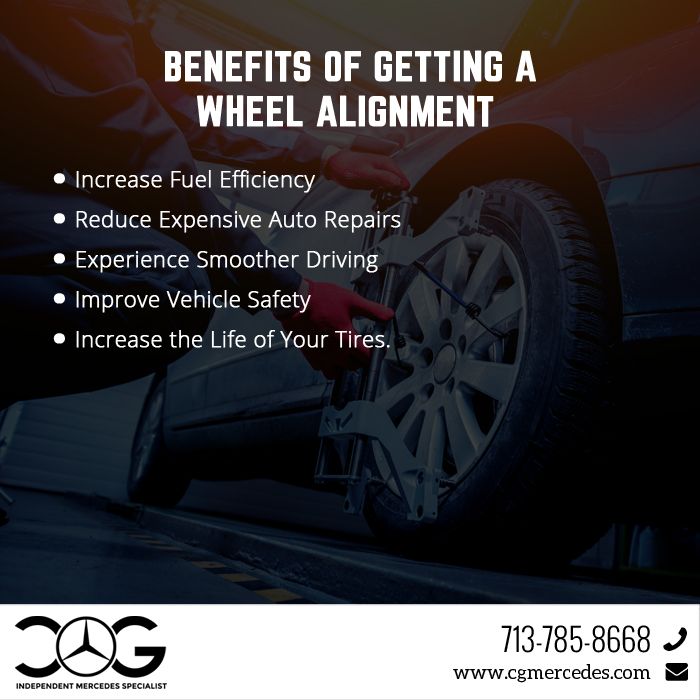 Also, an off-center steering wheel can sometimes be corrected by adjusting one tie-rod more than the other. (Steering wheel position has no effect on your final alignment.)
Also, an off-center steering wheel can sometimes be corrected by adjusting one tie-rod more than the other. (Steering wheel position has no effect on your final alignment.)
Camber
Camber is the measurement of tire lean in degrees. If the top of the tire tilts inward, the vehicle has negative camber; outward lean is positive camber. Most newer vehicles have slightly negative camber to improve stability and handling.
Two indicators of camber problems are the vehicle pulling to one side (the one with more positive camber or possibly less air in the tire) and uneven tire wear across the tread. Camber is easy to check with an angle finder and a straight edge, ideally one that's the same length as the wheel diameter so that tire sidewall bulge doesn't interfere with the straight edge.
Many front-wheel-drive cars don't have camber adjustments, and out-of-spec camber here often indicates bent or worn parts. On vehicles that have adjustable camber, the job can involve adding shims between the control arms and frame and turning cam bolts.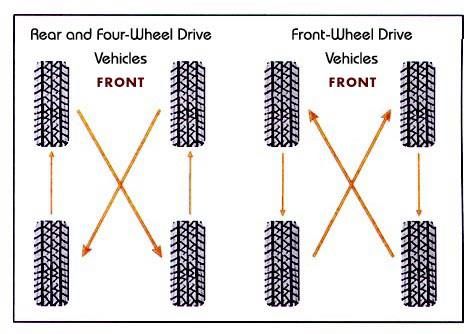 Many people prefer to let an alignment shop make these adjustments, particularly if their car has independent rear suspension.
Many people prefer to let an alignment shop make these adjustments, particularly if their car has independent rear suspension.
Caster
Caster is the angle of steering pivot in degrees. Just as water-skiers lean backward for stability, most vehicles are designed with slight negative caster – the upper ball joint is to the rear of the lower ball joint (similar to the front wheels on a shopping cart).
A clue to caster problems is the vehicle pulling to one side (the one with less positive caster). Heavy steering and wheel hopping over bumps are signs of too much positive caster, and light steering but excessive wander are clues of too much negative caster. Aligning to spec usually involves repairing or replacing chassis parts, so the average motorist is probably better off leaving caster corrections to the pros.
Taking a few minutes to check your alignment will make your tires last longer and your vehicle handle better. Even if you choose to have a shop align the vehicle, you'll have a better idea of the problem – and knowledge normally equals power.
Tire alignment, also known as wheel alignment, can help your tires perform properly and help them last longer. It can also improve handling and keep your vehicle from pulling in one direction or vibrating strangely on the road.
Alignment refers to an adjustment of a vehicle’s suspension – the system that connects a vehicle to its wheels. It is not an adjustment of the tires or wheels themselves. The key to proper alignment is adjusting the angles of the tires which affects how they make contact with the road.
There are a couple ways to tell if your car needs a tire alignment. If you've noticed one or more of these indicators, you should have your alignment checked by a licensed service technician immediately.
Uneven tread wear
Vehicle pulling to the left or right
Your steering wheel is off center when driving straight
Steering wheel vibration
When a technician checks your tire alignment, he or she is mainly concerned with three things:
 CAMBER
CAMBERThis is the inward or outward angle of the tire when viewed from the front of the vehicle. Too much inward or outward tilt, also known as negative and positive camber, respectively, indicates improper alignment and will need to be adjusted. Worn bearings, ball joints, and other wheel-suspension parts may contribute to camber misalignment.
Distinct from camber alignment, toe alignment is the extent to which your tires turn inward or outward when viewed from above. If that’s confusing, just stand up and look down at your feet. Angle them inward toward the center of your body. When the tires on your car are angled the same way (remember, we’re thinking in terms of birds-eye-view), we call this toe-in alignment. Angle your feet outward and you have toe-out alignment. Both require adjustment.
Your caster angle helps balance steering, stability, and cornering. Specifically, it’s the angle of your steering axis when viewed from the side of your vehicle. If you have positive caster, the steering axis will tilt toward the driver. Negative caster, on the other hand, means the steering axis tilts toward the front of your vehicle.
If you have positive caster, the steering axis will tilt toward the driver. Negative caster, on the other hand, means the steering axis tilts toward the front of your vehicle.
Improper wheel or tire alignment can cause your tires to wear unevenly and prematurely. Here are some specific types of undue tread wear attributable to misalignment:
Tires are “feathered” when the tread is smooth on one side and sharp on another. This is usually a sign of poor toe alignment.
This strain of tread wear means the inside or outside of the tread is significantly more worn than the center of the tread. As its name implies, positive or negative camber causes this type of wear.
This happens when one side of your tread blocks wears down more quickly than the other in a circumferential direction. When you run your hand over the tread, it will look and feel like saw teeth when viewed from the side.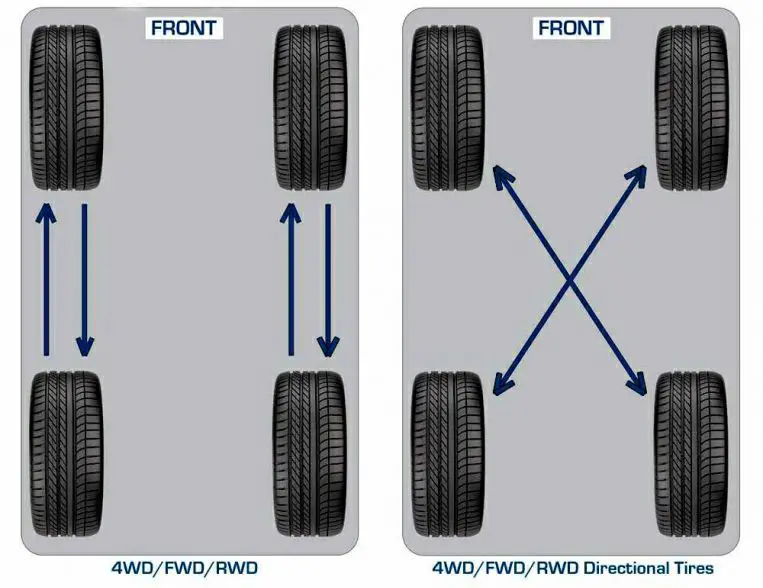 Heel/toe wear could be a sign of under inflation and/or lack of rotation.
Heel/toe wear could be a sign of under inflation and/or lack of rotation.
If you’re experiencing any of these unusual wear patterns, you should have a technician check your alignment. While tire wear prevention is a good reason to keep your wheel alignment in check, the consequences of misalignment can also play out in overall vehicle performance. A car that pulls to one side or steers erratically, for example, probably has an alignment problem.
Distinct from tire alignment, tire or wheel balancing refers to compensation for any weight imbalances in the tire/wheel combination and is often performed in conjunction with wheel alignment. There are two basic types of tire/wheel imbalance that need correction – static (single plane) and dynamic (dual plane).
Static balance addresses balance on only one plane – vertical movement which can cause vibration. A dynamic imbalance, on the other hand, addresses balance in two planes – vertical movement and lateral movement . Both types of imbalance require the use of a special balancing machine to help even things out.
Both types of imbalance require the use of a special balancing machine to help even things out.
To begin balancing your tires, a technician will mount them on the correct rims and adjust the pressure to optimal inflation. Then each tire goes on the center bore of a balancing machine. The machine spins the tire at a high speed to measure the wheel/tire combination imbalance. It signals how much weight the tech should add to balance out the tire and the areas where said weight is needed.
Tire balancing is essential for proper tire care for the same reason as wheel alignment: prevention of premature tread wear. Having tires aligned and balanced every 5,000 to 6,000 miles can help maximize their lifespan and overall performance.
If you rarely visit a service station, there is a risk that your car has the wrong alignment. If the wheels are in the wrong position, your tires will wear out faster than usual, on a wet road the car will “throw” from side to side.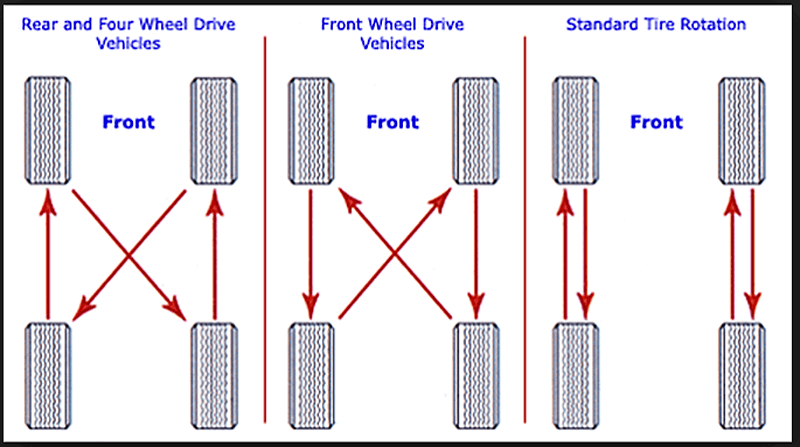 You will have to change wheel bearings and other parts more often. In this article, we will tell you how to understand that the wheels are in the wrong position, and what to do about it.
You will have to change wheel bearings and other parts more often. In this article, we will tell you how to understand that the wheels are in the wrong position, and what to do about it.
What is wheel alignment (toe-toe)
Wheel alignment - installation angles of automobile wheels. Normally, they should be straight. With negative camber, the upper side of the wheels is directed inward, with positive camber, outward. With positive convergence, the leading edges of the wheels are directed towards narrowing, with negative convergence, towards expansion.
Wrong wheel alignment
A diagonal dent on a tire tread is a sign of incorrect wheel alignment that few people know about. It is typical for the rear wheels of front-wheel drive cars. A dent appears due to the uneven distribution of the load on the tire, especially if the car often carries loads - for example, if you often carry vegetables from your summer house or carry passengers with luggage.
Other possible causes of the problem:
What to do: if you often transport goods, there is a risk of suspension failure - check it at a service station. If you drive alone, together, or have recently checked the suspension, the cause is most likely a wheel alignment: check it yourself or in a service station.
Uneven tire wear in three out of five cases is a sign of incorrect wheel alignment. With positive camber, the outer side of the tread is “eaten away”, with negative camber, the inner side. This is due to the fact that the load on the tires is unevenly distributed - the wheels are littered on one side, the tread is more actively erased on the road.
Other possible causes of the problem:
transportation of heavy loads - in this case, one-sided uneven wear appears, that is, only one side is worn on all wheels;
damaged suspension bushings, springs, ball joints.
What to do: adjust the wheel alignment in the service station. Replace damaged tires - uneven wear impairs handling. If you think that the problem is damaged bushings, springs, hinges, check them and change them if necessary.
If, when driving in a straight line, the steering wheel is uneven - deflected to the right or left, this is the reason to check the position of the wheels. The incorrect position of the steering wheel may be due to the displacement of the wheels on the rear axle when only the front axle was adjusted. Another possible reason is a large difference in rear camber: for example, when one has negative camber and the other has positive camber.
Other possible causes of the problem:
increased play in the steering mechanism;
difference in pressure between the front and rear wheels;
malfunctions in the running gear;
rubber defects.
What to do: Check steering wheel play, chassis, tires and tire pressure. If everything is in order, inspect the rubber. adjust wheel alignment.
If you have to constantly keep the steering wheel under control, do a little test. Accelerate to 20-40 km/h on a flat empty road, put the steering wheel straight to drive the car forward, and release it. If the car begins to "steer" to the left or right, this may indicate incorrect wheel alignment.
Other possible causes of the problem:
uneven wear of the tread, including due to improper wheel alignment;
pressure difference in the wheels by more than 0.5 atmospheres;
wheels of different size and tread pattern mounted on the drive axle;
deformation of spars, other body elements and suspension parts;
breakdown of the power steering valve;
when “changing shoes”, the tires were put in the wrong place where they stood.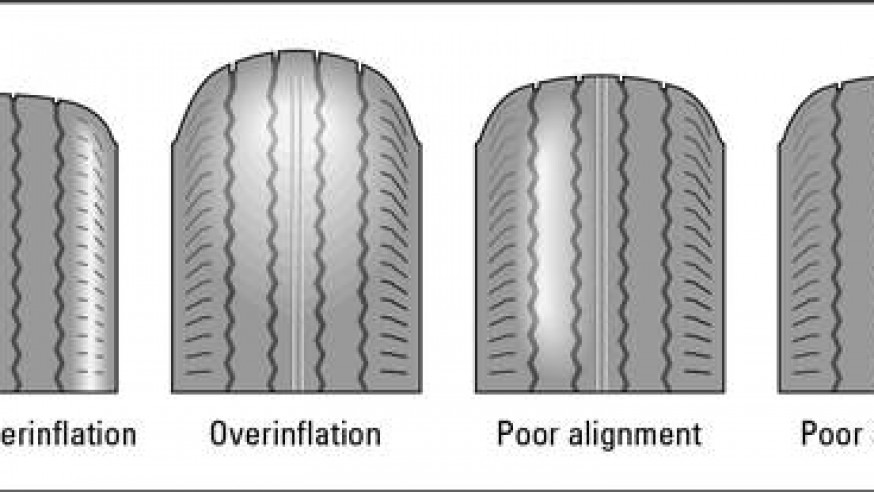
What to do: Check tire pressure, tread wear, suspension and bodywork. Test the hydraulic booster - if the steering wheel turns tighter than usual, or the steering wheel play has increased, change the faulty valve. If everything is in order, the problem is the alignment: adjust it in the service station.
Advice: you should not "shoe" the car in different tires - for example, use 2 wheels of different sizes from different manufacturers or put winter tires on the front axle and summer tires on the rear. This can lead to the fact that the car starts to “lead”, especially when cornering or when driving to the side of the road, it worsens.
Another tip: every time you change shoes, mark the rubber, for example, “LP” - left front. So you will not put tires on one axle, which last season were put on one on the rear, the other on the front axle.
Pulling to the side when braking is a sign of a large difference in wheel alignment angles. At different values of the camber and caster angles, the car, when braking, turns in the direction of a smaller caster angle of the kingpin. When driving in a straight line, the car may not drive away, because one parameter is compensated by another: due to incorrect camber, it pulls in one direction, because of the PNS it pulls in the other, and the car eventually balances.
At different values of the camber and caster angles, the car, when braking, turns in the direction of a smaller caster angle of the kingpin. When driving in a straight line, the car may not drive away, because one parameter is compensated by another: due to incorrect camber, it pulls in one direction, because of the PNS it pulls in the other, and the car eventually balances.
Other possible causes of the problem:
What to do: Bleed the brake system to expel the air. If this does not help, check the brake cylinders. If there are traces of brake fluid leakage or if the cylinder pistons do not come out when you press the brake pedal, change the part. If everything is in order, adjust the wheel alignment, camber.
If you need to apply force to turn the steering wheel, this may indicate that the camber angle is too high. In this case, the car may not “drive”, and there will not even be uneven wear.
Other possible causes of the problem:
low air pressure in tires - less than 1. 2 atmospheres;
2 atmospheres;
the steering rack or pendulum lever is tightened;
tight tie rods or ball joints are installed - they will gradually “develop” themselves;
tire width is greater than the width recommended by the manufacturer.
What to do: Check the air pressure in your tires. Check the condition of the steering rack and pendulum lever - if they are overtightened, you need to loosen them yourself or in a service station. Measure the tire width, compare it with the recommended parameters - if it is larger, replace the rubber. If all else fails, adjust the wheel alignment in the service station.
A characteristic sound may appear due to the fact that the wheels do not touch the asphalt tightly enough with the tread. The squeal is especially heard when cornering at low speed or when accelerating from 20 to 40 km / h.
Other possible causes of the problem:
high tire wear;
overheated tires.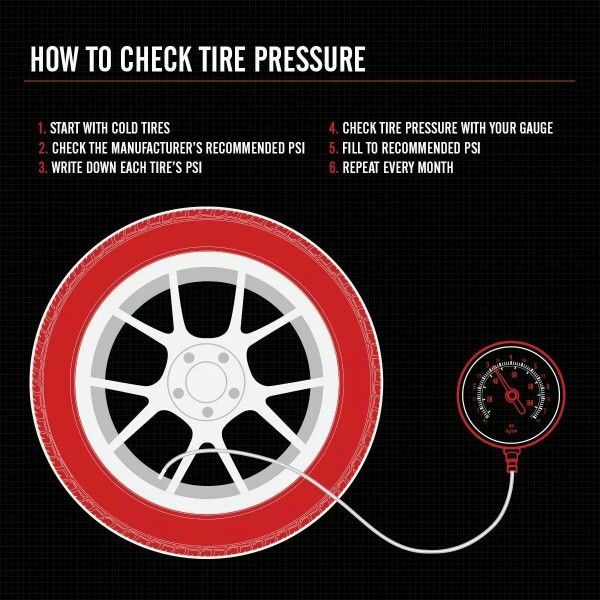
What to do: Check the condition of the rubber - if the tread depth is less than 1.6 mm, replace it. If the rubber "squeals" only in the heat, at temperatures above 35 ˚C, nothing needs to be done. If the rubber is in good condition, it is not hot outside, but it still makes unpleasant sounds when cornering, adjust the camber.
This is another non-obvious sign of incorrect wheel alignment. The steering wheel may not return to "zero" after a turn due to incorrect wheel alignment - it will be more difficult for them to turn to a straight position, because of which the steering wheel will remain in place, and you will have to turn it yourself.
Other possible causes of the problem:
low fluid level in the power steering reservoir;
tightened steering rack;
malfunction of the steering rack parts.
What to do: check the fluid level in the power steering reservoir - if it is low, top up. Check the steering rack: if the steering wheel began to turn tighter, it is overtightened and can be loosened a little, but so that there is no big play. Check the condition of the steering rack in the service station. If everything is in order, adjust the position of the wheels - your wheel alignment is broken.
Check the steering rack: if the steering wheel began to turn tighter, it is overtightened and can be loosened a little, but so that there is no big play. Check the condition of the steering rack in the service station. If everything is in order, adjust the position of the wheels - your wheel alignment is broken.
Increased noise from tires while driving is associated with uneven wear, which is also a consequence of incorrect wheel alignment. Due to the difference in wear, the running resistance increases, so noise occurs.
Other possible causes of the problem:
What to do: If the noise only appears at high temperatures or when driving on rough roads, do nothing. If not, check the tire pressure and compare it with the value recommended by the manufacturer. If everything is in order, check the wheel alignment.
If the car pulls strongly to the side when it hits bumps, pits and other irregularities, this may be a sign of an incorrect wheel alignment.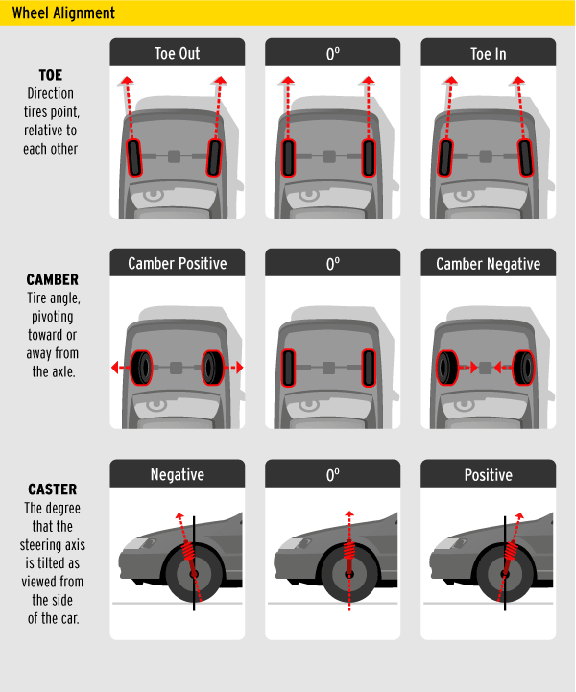 The wheel, getting on the roughness, "leaves" towards the installation angle, so the car loses its directional stability.
The wheel, getting on the roughness, "leaves" towards the installation angle, so the car loses its directional stability.
Other possible causes of the problem:
What to do: go to the service station and check the shock absorbers, chassis and steering system. Or immediately make a wheel alignment diagnostic: if the shock absorbers and steering are in order, the reason lies in it.
You can also check if the wheels are installed correctly in the garage. You will need a plumb line, a telescopic ruler and free time for testing, performing calculations. To check collapse:
Park the car on a level surface.
Set the wheels straight.
Make marks at the top and bottom of the tire on the outside.
Attach a plumb line to the wing.
Measure the distance from the rim to the plumb line at both marks.
Move the car forward so that the labels rotate 90 degrees.
Repeat measurements. If the difference in distance between the rim and the plumb line on both marks exceeds 3 mm, the camber is incorrect.
The convergence is checked with a telescopic ruler, according to the marks on the inside of the tire. It can take a whole day to check and adjust - please be patient. Or come to the service station if you want to save time and get quality assurance.
Monday, July 18, 2016 12:27:01 Europe/Moscow
vehicle axles. This was done for different purposes, for example, the wheels were placed with the right side out, so that when driving, the dirt would not fall on the passengers, or vice versa, so that the wheel would not come off the axle when the dowel was lost (the pin holding the wheel). Carriages have long gone, but the installation of wheels with different inclinations has reached and is used in modern cars.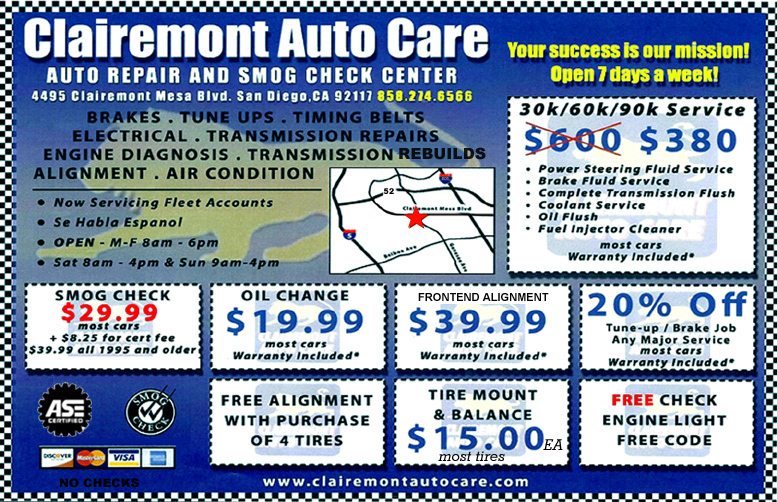 These settings are called wheel alignment. Next, we will look at the main ones.
These settings are called wheel alignment. Next, we will look at the main ones.
In service centers, we often see a suggestion to adjust the wheel alignment. In the phrase "dismantling-collapse" two parameters of wheel installation are hidden at once. The first one is convergence/divergence . Toe-in is the angle between the plane of rotation of the wheel and the longitudinal axis of the vehicle as viewed from above. If the planes of the wheels intersect in front of the car (as in the picture on the right), then this is called a convergence, if behind the car, then a divergence.
The vast majority of production vehicles have front wheel toe-in. Firstly, it allows you to compensate for the effect of longitudinal forces on the wheel during rolling. Secondly, it improves handling and stability on the road. There are also reverse examples: with a small discrepancy between the wheels, the speed of reaction to turning the steering wheel increases. Such settings are often used in motorsport. But in everyday life, other benefits of toe-in are much more important than excessively “sharp” steering when diverging.
Such settings are often used in motorsport. But in everyday life, other benefits of toe-in are much more important than excessively “sharp” steering when diverging.
Another important wheel setting is Camber . Camber is the angle between the vertical and the plane of rotation of the wheel, when viewed from the front of the car. Camber can be positive (if the top of the wheel is facing out) or negative (if the wheel is facing towards the body). With the development of various types of suspensions on cars, both positive and negative camber angles are encountered. The positive angle is designed to compensate for the displacement of the wheels when the axle is loaded (static load, or dynamic during acceleration and braking). Negative camber improves traction and stability. Negative camber machines can be seen in car racing, but these settings are detrimental to tire life.
As a rule, wheel alignment values are indicated by the ranges within which they can be set.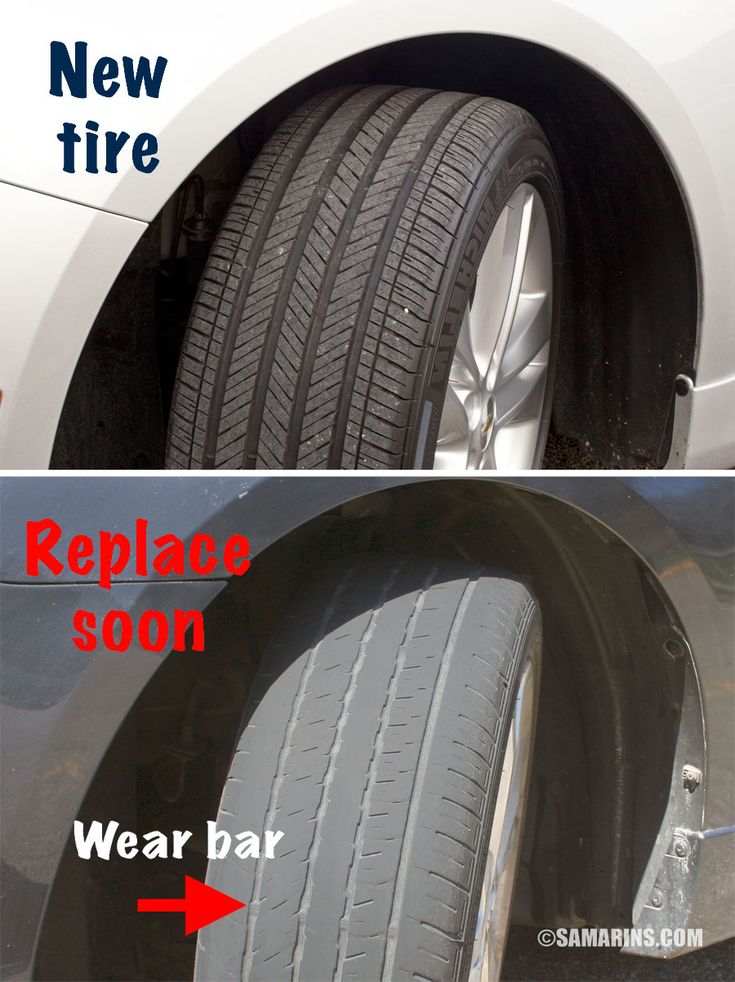 Even small changes in these angles affect the handling and stability of the car, because the wheel must maintain an optimal position in all driving modes, at all speeds and on various surfaces. And by adjusting the kinematics of the suspension and setting these angles, one or another automaker can give a different character to their models.
Even small changes in these angles affect the handling and stability of the car, because the wheel must maintain an optimal position in all driving modes, at all speeds and on various surfaces. And by adjusting the kinematics of the suspension and setting these angles, one or another automaker can give a different character to their models.
Wheel alignment also affects tire wear. With incorrect settings, the tire may wear out unevenly, which will cause it to fail earlier. In some cases, by wear, you can determine which settings have gone astray in the suspension.
With incorrect camber, there will be increased wear on one side of the tire. In the case of excessively positive camber, the outer part of the tire tread will wear out more intensively. With negative camber, on the contrary, the inner part of the tire will wear out more. In case Incorrect toe angle settings The tire begins to wear unevenly and burrs appear on it, which can be felt with your hands.